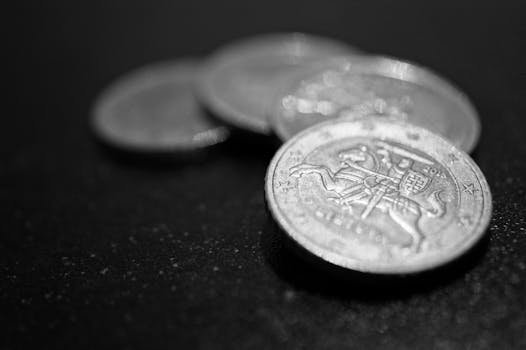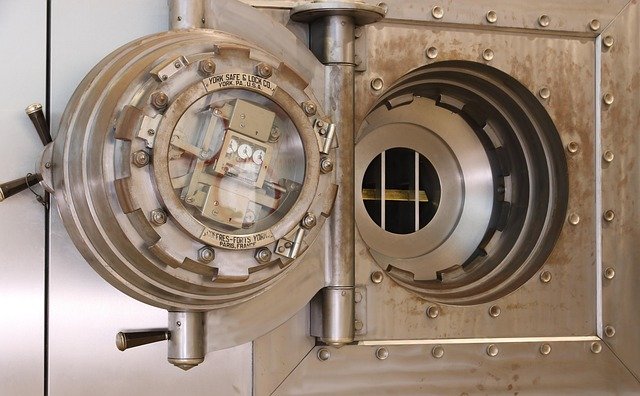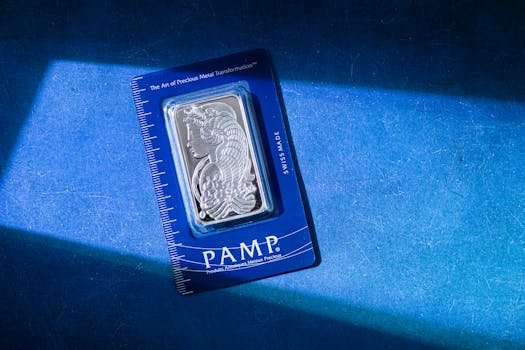When to Pay a Premium
There isn’t one “silver market”—there are two: a fast, transparent bullion market where price tracks the metal, and a slower, expert-driven numismatic market where price tracks collector demand. Mixing them up is how beginners overpay. This guide shows you how each market works, when premiums are sensible, and when to walk away.
Introduction: Two completely different silver markets
If you’re new to silver, the catalog looks like a candy store: shiny rounds, government coins in capsules, vintage pieces with history, graded slabs promising “perfect” condition. Under the hood, though, these options live in two distinct ecosystems with different pricing, liquidity, and risks.
- Bullion is about metal weight. You pay spot price + a modest premium for fabrication and distribution, then expect to sell back near spot (minus a spread). It’s the cleanest way to add silver exposure for hedging, stacking, or diversification.
- Numismatics is about collectibility. You pay for rarity, grade, and demand—often at multiples of melt value. If the collector market cools, prices can move independently of spot (and not always in your favor).
Most first-time buyers don’t need a lecture in coin history—they need clarity. For 90% of investors, bullion is the answer because it’s liquid, transparent, and hard to mess up. Numismatics can be rewarding if you love the hobby and do the homework, but treating collectibles like bullion is an expensive mistake. Let’s split the two worlds cleanly and give you a decision framework that protects your wallet.
After the basics, learn when silver vs gold makes sense in a portfolio.
What is silver bullion?
Definition: value tied to silver content (spot + premium)
Bullion’s value comes from its precious metal content. Pricing is straightforward: Spot price (the live wholesale price per troy ounce) + premium (fabrication, distribution, dealer margin). Example:
- Spot: $25.00/oz
- 1 oz generic round premium: + $2.00 → $27.00
- 1 oz government coin premium: + $4.00 → $29.00
When you sell, dealers quote a buy bid vs spot (e.g., spot – $0.50 or spot – 1%). The tighter the buyback spread for your product, the more of that initial premium you recover on exit. Bullion is therefore best thought of as metal exposure with a small friction cost going in and out.
Common products (rounds, bars, government coins)
- Rounds (private-mint “coins”): Usually the lowest premiums, widely available in 1 oz. Great for stacking; recognition varies by mint.
- Bars: 1 oz, 10 oz, 100 oz are common. Recognized brands (e.g., PAMP, Valcambi, Sunshine, Royal Canadian Mint) resell easier than no-name bars.
- Government coins: American Silver Eagle (ASE), Canadian Maple Leaf, Austrian Philharmonic, Britannia, Kangaroo. Slightly higher premiums than rounds/bars, but often stronger buyback bids thanks to recognition.
At-a-glance
| Form | Typical Premium (Retail) | Liquidity | Notes |
|---|---|---|---|
| Generic 1 oz rounds | Low | High | Lowest entry cost; brand matters on resale |
| 10 oz / 100 oz bars | Low–Moderate | High (wholesale channels) | Efficient for bulk; verify brand |
| Government 1 oz coins | Moderate | Very High | Better buyback; widely recognized |
Purity standards (.999 vs .9999)
Most bullion silver is .999 fine (99.9%); some mints produce .9999. On resale, dealers generally care more about recognizable brand/mint and weight than the extra “9.” What does matter:
- Dimensions/weight tolerances (speed up verification).
- Security features (micro-engraving, radial lines).
- Packaging (tubes, mint-sealed boxes) that reduces handling marks.
Premium structure (typically 10–30% over spot)
Silver premiums are higher (in % terms) than gold because fabrication is a bigger share of total value. Expect:
- Generic rounds/bars: ~8–18% in normal markets.
- Government coins: ~15–30% (sometimes more in tight supply).
- Small denominations (fractional ounces): much higher % premiums—usually not worth it for stackers.
Premiums expand in supply crunches (e.g., sudden retail demand) and compress when inventory is abundant. Your job is to avoid peak-premium buying and choose products with strong buyback support.
What are numismatic silver coins?
Definition: value from rarity, condition, historical significance
Numismatics derives value from scarcity and desirability, not just silver weight. Price drivers:
- Mintage numbers and survival rates
- Historical significance (era, design, mint)
- Condition (uncirculated vs circulated, eye appeal)
A coin with 1 oz of silver might sell for $300 if the date/mint is rare and the condition is superb—even when melt value is $25. That spread is the numismatic premium, which can rise or fall with the collector market.
Grading importance (MS-60 vs MS-70 price differences)
Third-party grading (e.g., PCGS, NGC) encapsulates coins in tamper-evident holders and assigns grades (MS-60 to MS-70 for uncirculated). Small grade jumps can cause large price jumps—especially at the high end:
- MS-69 → MS-70 can double or triple price for modern issues.
- For vintage coins, even a move from XF (Extremely Fine) to AU (About Uncirculated) can be meaningful.
Grading protects and standardizes, but beware: modern bullion coins slabbed as MS-69/MS-70 often don’t justify huge premiums because populations are massive. Rarity is about survivor counts, not marketing language.
Key date/mintmark premiums
Certain dates/mints (“key dates”) attract intense demand. Example patterns:
- Low-mintage years or mintmarks
- First/last year of a design
- Coins with design changes or errors
Key dates can command multiples of melt, with pricing anchored in collector references and auction records. If you don’t know those references, you’re not ready to speculate.
Premium structure (can be 100–1000%+ over melt)
Numismatic premiums routinely exceed 100%—and in rare cases, 10× melt. That upside is why collectors love the niche. But it cuts both ways: thin markets mean wider spreads and longer sale times. Treat numismatics as a hobby-investment hybrid, not a passive hedge.
Bullion silver: pros and cons
Pros: Liquidity, transparent pricing, easy to buy/sell, lower entry cost
- Fast exits: walk into a decent dealer and get a competitive bid same day.
- Transparent pricing: live spot + posted premiums; easy to compare across dealers.
- Scalable: from $200 to $200,000+ simply by changing form and quantity.
- Simple documentation: invoices show weight/purity; no catalog-level details required.
Cons: No appreciation beyond spot, storage bulk, VAT in EU
- Return driver is mostly spot (plus/minus premium recovery).
- Storage is bulky vs gold; larger positions need real safes or vaults.
- In the EU, silver is typically subject to VAT, inflating the true cost unless using specific schemes.
Best for: stackers, inflation hedgers, beginners
If your goal is exposure to silver as a metal—not a coin collection—bullion wins. Start with recognized coins/bars, learn spreads, and keep records. You’ll sleep better and sell faster.
Numismatic silver: pros and cons
Pros: Potential appreciation independent of spot, collectible enjoyment
- Returns can decouple from metal price (based on rarity demand).
- Cultural/historical value enhances long-term satisfaction.
- Less correlated with commodity cycles at the high end.
Cons: Illiquid, requires expertise, high spreads, market manipulation risk
- Finding buyers often takes weeks/months and specialist channels (auctions, dealers).
- Spreads (the dealer’s margin) are wide vs bullion.
- Fads and marketing hype can inflate values temporarily.
- Counterfeit and altered/cleaned coin risks require experience.
Best for: experienced collectors, hobby enthusiasts
Enjoy numismatics if you love coins and study the field. As a primary investment, it’s risky without expertise. As a small satellite for educated collectors, it can be rewarding.
When bullion premiums make sense
Government coins vs generic rounds (2–5% premium difference)
Government coins often cost $2–$4 more per ounce than generics. Sometimes that extra premium is worth it because:
- Dealers bid tighter to spot on Maples/ASEs/Phils.
- Retail demand for government coins supports resale prices.
- In stress markets, Tier-1 coins move first.
If you plan to sell frequently or in small batches, government coins can recover more of their entry premium than generics, narrowing the round-trip cost.
Dive into cycles, volatility and demand in our silver evidence dossier.
Recognition value (American Eagles sell faster)
Recognition reduces testing/time costs for buyers. In the US, ASEs are king; in the EU, Philharmonics/Maples excel; globally, major mints are preferred. Faster turnover → better bids. If exit speed matters, buy what dealers post bids for daily.
Anti-counterfeiting features
Features like radial lines, micro-engraving, privy marks, and tamper-evident packaging help dealers trust what they see—meaning less need for assay and tighter buy bids. Even for bars, recognized brands with verifiable dimensions win.
Manufacturing quality
Consistent weight, thickness, and edges reduce hassle. Scuffed, milk-spotted, or dinged coins usually still sell as bullion, but pristine tubes can fetch slightly better bids—especially for ASEs/Maples on bulk buybacks.
When numismatic premiums DON’T make sense
Dealer marketing: “rare” coins that aren’t
If a TV ad, glossy mailer, or high-pressure caller says a coin is “rare” while selling thousands of them at a time, it’s probably not rare. Real rarity doesn’t appear in mass-market channels at fixed “special prices.”
Artificial scarcity (modern limited editions)
“Limited to 25,000!” sounds impressive—until you discover demand is 5,000. Artificial caps don’t guarantee future value. Check secondary market results, not just mintage.
Graded modern bullion (usually not worth premium)
Slabbing common modern bullion as MS-69/MS-70 invites big markups with little long-term edge. Unless population counts are truly scarce (they rarely are), you’re paying for plastic, not value.
Red flags in sales pitches
- “Government-backed rare coin investment” (mixing bullion guarantees with collector claims).
- “Today only” urgency with no market basis.
- High-pressure phone scripts, free “portfolio reviews,” or buyback promises without written terms.
Semi-numismatic: the gray area
What qualifies (pre-1965 US coins, older sovereigns)
- US 90% silver (dimes, quarters, halves pre-1965) a.k.a. junk silver: valued by melt with small premiums for divisibility.
- Classic sovereigns (British Sovereigns, 20 Franc pieces): globally recognized with a collector-lite premium.
Premium structure (20–40% over melt)
These pieces often trade at modest premiums—higher than pure bullion, lower than true numismatics. Premiums expand/constrict with collector interest and metal cycles.
When this category works
- You want divisibility and recognition without full collector risk.
- You’re in regions where these pieces are standard trade units with dealer bids posted daily.
Liquidity comparison
Bullion: sell same day at competitive prices
Walk-in dealers and online buyback desks post standing bids for 1 oz coins, 10 oz bars, and common rounds. Big lots ship with insured labels, pay on receipt/assay. Liquidity scales easily if products are standard.
Numismatic: weeks to months, specialist required
Selling slabbed rarities needs auction placement or specialist dealers, submission windows, and seller’s fees. You might wait 1–3 months to close and settle. You also risk reserve not met outcomes.
Spread analysis (2–5% vs 10–30%+)
Illustrative exit spreads (calm markets):
| Category | Typical Exit Spread vs Spot | Time to Cash |
|---|---|---|
| Tier-1 bullion coins (ASE/Maple/Phil) | 0% to −2% | Same day – 3 days |
| Recognized bars / generic rounds | −1% to −4% | Same day – 3 days |
| Semi-numismatic | −3% to −8% | Days – weeks |
| Collector numismatics | −10% to −30%+ (fee-adjusted) | Weeks – months |
Investment returns comparison
Bullion: tracks silver spot (plus premium recovery)
Your total return approximates spot changes plus/minus premium effects. If you buy with reasonable premiums and sell into tight spreads, the round trip is efficient. Bullion therefore suits systematic accumulation (DCA) and portfolio hedging.
Numismatic: variable, dependent on collector market
Returns can be excellent in the right niches (true scarcity + rising demand) and poor when fads fade or grades prove common. Outcomes are idiosyncratic and require specialization. If you don’t track auction comps, you’re flying blind.
Historical performance data
Long-run, bullion’s behavior mirrors commodity cycles; collector coins mirror collector cycles. Each can outperform the other in different decades. If your priority is predictability, bullion wins.
Tax implications
US: both 28% collectibles rate
In the US, gains on physical silver (bullion and numismatics) are taxed at the collectibles rate (up to 28%) when long-term. Short-term gains follow ordinary income rates. Keep invoices and sale receipts for basis.
EU: VAT differences (bullion taxed, some numismatic exempt)
In much of the EU, silver bullion is subject to standard VAT, while certain collectible/second-hand coins may sell under margin schemes that reduce visible VAT. Rules vary by country—know your local treatment to avoid surprises.
Capital gains treatment
CGT rules differ widely: some countries allow allowances/exemptions; others tax worldwide gains. Document purchase date, cost, and FX rate on both entry and exit.
This is educational, not tax advice—verify with a local professional.
Decision framework: which should YOU buy?
Questionnaire: goals, experience, capital
- Is your primary goal metal exposure or collecting?
- Do you need quick resale at fair prices?
- Do you have time to learn grading, varieties, and auction markets?
- Will VAT/storage costs materially change your return math?
- Are you comfortable with wider spreads and longer sale times?
Recommended allocation percentages
- Beginner/stacker: 100% bullion.
- Pragmatic investor: 90–100% bullion, 0–10% semi-numismatic for divisibility/interest.
- Collector-investor: 70–90% bullion, 10–30% true numismatics (after study).
When to mix both
Blend if you genuinely enjoy coins and are willing to treat numismatics as a hobby sleeve with separate expectations and no reliance on quick liquidity.
Common buyer mistakes
Paying numismatic premiums for bullion-grade coins
Colorized, “tribute,” or “first-strike” labels on ordinary bullion don’t create rarity. If the coin’s value still lives near melt, pay bullion pricing, not collectible pricing.
Thinking all old coins are valuable
Age ≠ value. Without demand and condition, “old silver” often trades near melt. Verify with mintage, survival, and grade data—not folklore.
Getting sold collectibles as “investments”
If a salesperson pushes high-commission “investment-grade” collectibles with guaranteed appreciation, step back. Real investments don’t require telemarketing theatrics.
Your silver buying strategy
If you want silver exposure with minimal drama, buy bullion: 1 oz government coins or recognized bars/rounds with sane premiums and strong buybacks. If you love history and rarity, allocate a small, educated sleeve to numismatics and accept its slower, spikier nature. Always calculate the round-trip (entry premium → exit spread), and keep paperwork tight. Above all, remember the rule that protects 9 out of 10 buyers: When in doubt, buy bullion.
Handling matters—avoid value loss with risk & care guidelines.
FAQs
Is .9999 silver better than .999 for resale?
Not meaningfully. Recognition and brand matter more than the extra “9” in most markets.
Should beginners buy graded (slabbed) silver?
Not for bullion exposure. Slabbed modern bullion rarely justifies large premiums.
Do government coins always beat bars on resale?
Often, yes—but check current buy bids. In some markets, recognized bars perform similarly.
What’s “junk silver,” and is it good to buy?
Pre-1965 US 90% silver coins. Good for divisibility and often carries modest premiums; treat it as semi-numismatic.



